September 2025
As the world gathers once again for Climate Week in New York, one sector remains critically underrepresented in the global climate dialogue despite its outsized impact and potential: agriculture.
Our food system is both a cause and solution when it comes to climate change
The world’s food system is responsible for one-third of global greenhouse gas (GHG) emissions, making it the second-largest emitter after energy. The largest source of emissions is the farm-gate, which includes the growing of all crops and livestock, plus on-farm energy use.
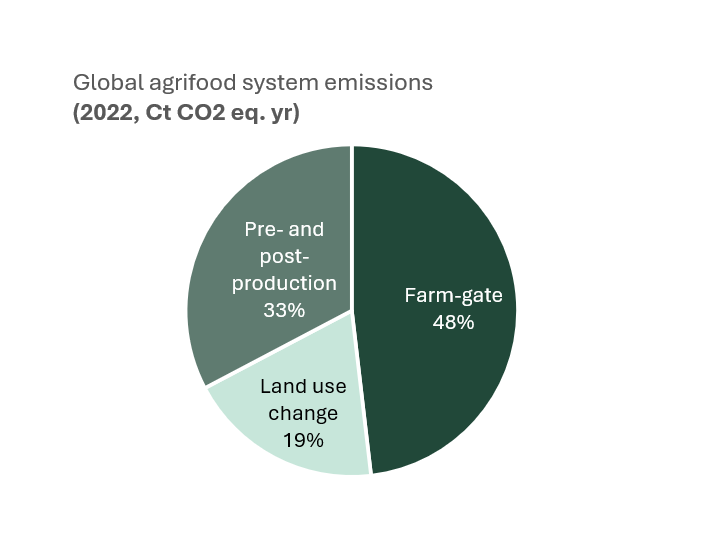
Since land has been cultivated, soils have lost 133 billion tons of carbon, and in the U.S. Midwest specifically, soils have lost 30–50% of their original carbon stock. While converting wild lands to farmland naturally releases some soil carbon, conventional agriculture (the prevailing system in the U.S. since the mid-twentieth century) has dramatically accelerated that loss. Practices like intensive tillage, bare fallow periods, and monoculture cropping degrade soil health and speed up soil carbon release. On top of that, synthetic nitrogen fertilizers and concentrated animal feeding operations (CAFOs) emit other, far more potent, GHGs: nitrous oxide (~265x) and methane (~28x). Beyond emissions, agriculture is also the primary driver of biodiversity loss and accounts for 92% of the global water footprint.
Despite these challenges, our food system is also the single largest climate solution available today, according to Project Drawdown. It has the potential to sequester or reduce 295 gigatons of CO₂ by 2050— a greater impact than any other individual sector, including energy, industry, forestry, or transportation. Yet despite its promise, investment remains underfunded. On a per-gigaton basis, food systems attract just $0.32 of investment per ton of climate potential, compared to $1.99 for energy and $5.43 for transportation. Among the three categories of climate solutions within the food system, regenerative agriculture accounts for the largest share, representing 66% of the total opportunity.
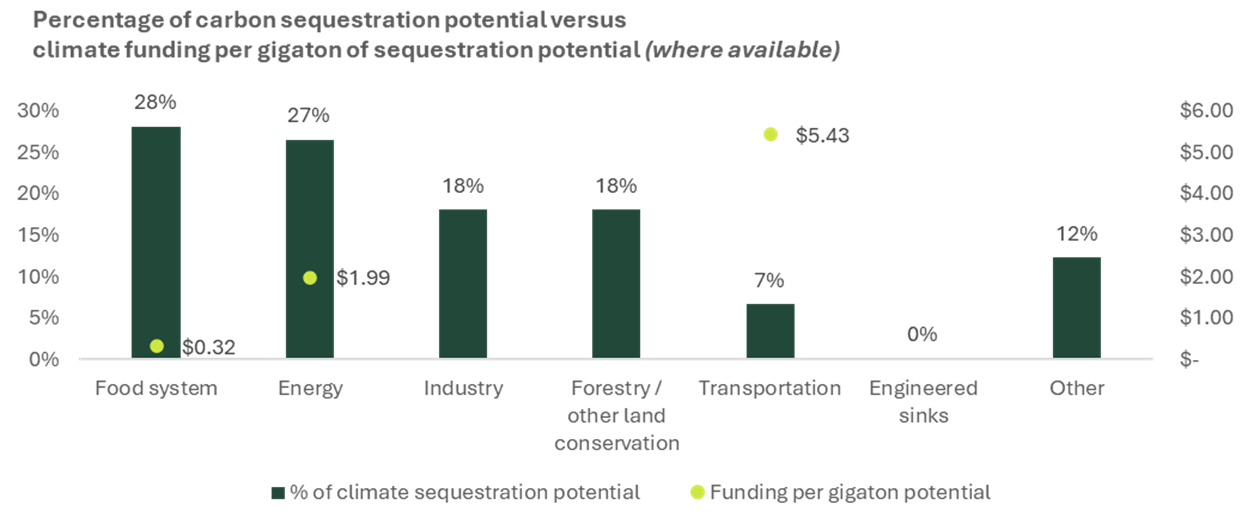
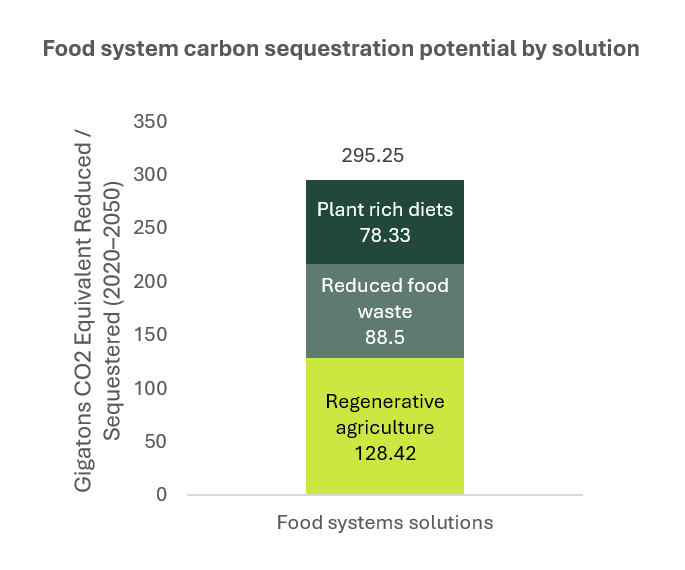
From source to sink: regenerative agriculture’s carbon sequestration potential
At the heart of agriculture’s climate potential is soil, the planet’s second-largest carbon sink after oceans, holding three times more carbon than the atmosphere. Regenerative agriculture, a farm management approach that focuses on building soil health, has the potential to re-sequester 60–70% of the carbon lost through conventional farming. Key regenerative practices include no-till farming, cover cropping, crop rotation, organic amendments and manure application. These techniques increase soil organic matter, improve water retention, and enhance biodiversity—all while pulling carbon out of the atmosphere. Therefore, what to date has acted as a source of carbon can be converted to a sink.
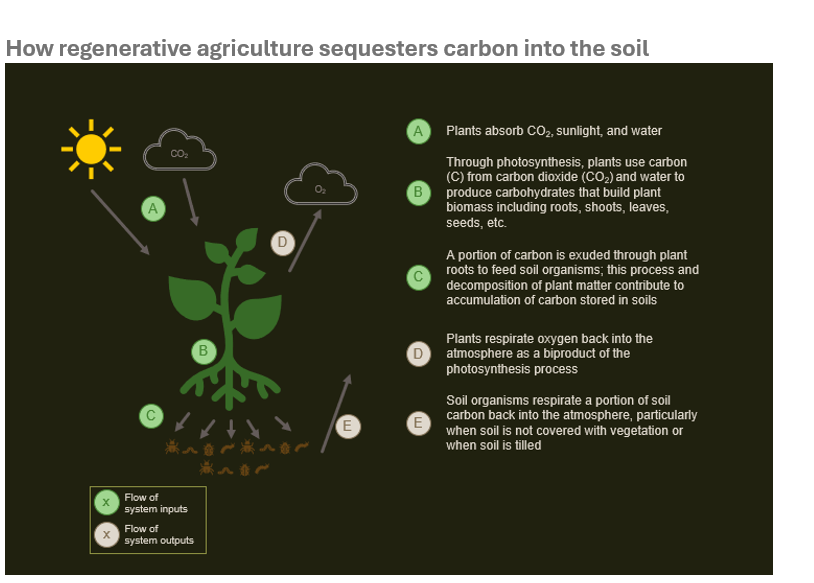
Compared to other carbon removal technologies, regenerative agriculture is the most cost-effective, highly scalable across diverse geographies and farm sizes, and delivers multiple co-benefits, including reduced nitrogen runoff, lower input costs, and stronger support for farmer livelihoods.
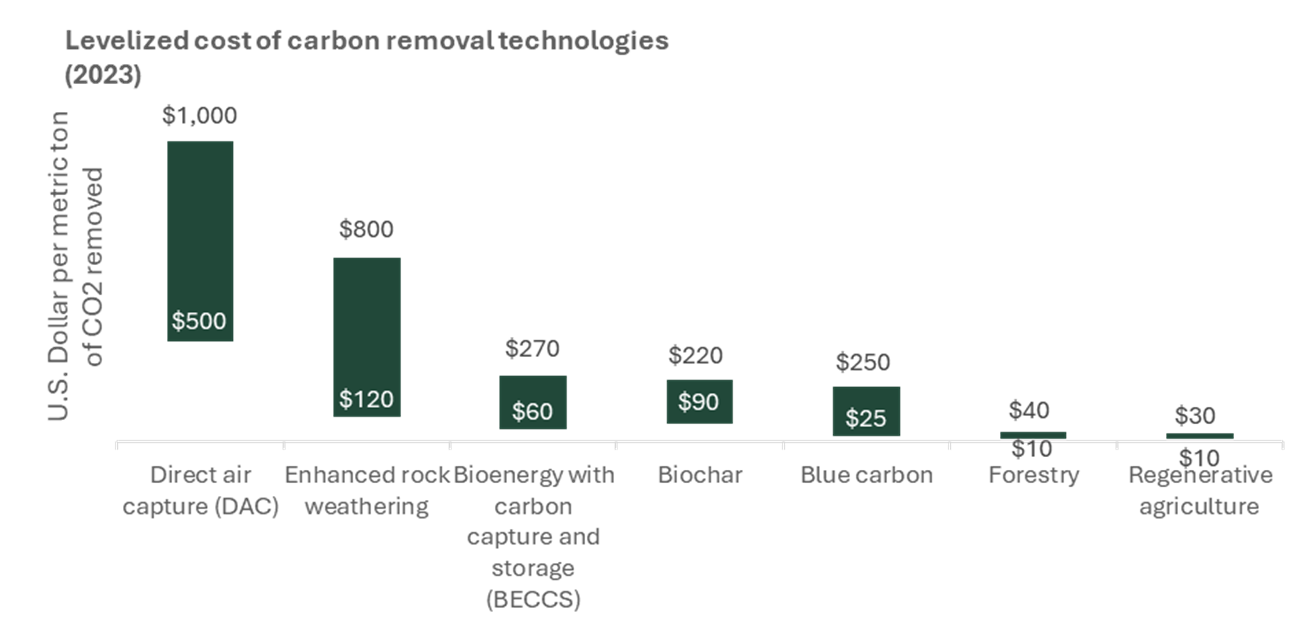
Beyond carbon: how regenerative agriculture builds resilience and equity
Regenerative agriculture delivers climate benefits beyond sequestering carbon and reducing agricultural GHG emissions into our atmosphere. Here’s how it stacks up across key dimensions:

As extreme weather events become more frequent and intense, regenerative farmers who prioritize soil health—enhancing land resilience, water retention capacity, and biodiversity— may be better equipped to withstand these challenges than those who do not.
Source: NOAA. Billion-dollar weather and climate disasters, United States summary
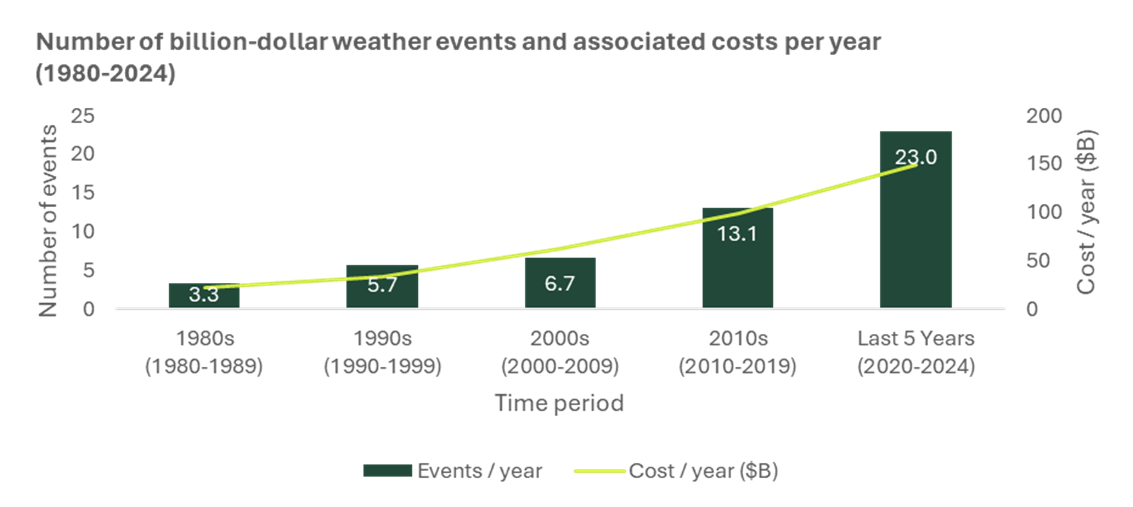
Putting agriculture on the climate agenda
For those of us who care about limiting the consequences of climate change while supporting our waterways, biodiversity, and rural communities, the time is now to act on the most overlooked and scalable climate solution we have.
If you are at NY Climate Week next week, consider attending a regenerative agriculture related event, such as the State of Regenerative Agriculture hosted by WhyRegenerative, (we’ll be there!). If you’re interested in learning more about how to invest climate finance into regenerative agriculture, reach out to us at IR@agriculturecapital.com or learn more at: https://agriculturecapital.com/strategy.
References
1. Climate Impact Lab. (2025, June 18). Climate change cuts global crop yields, even when farmers adapt. Stanford Doerr School of Sustainability.
2. ClimateShot Investor Coalition. (2025). Landscape of Climate Finance for Agrifood Systems 2025.
3. Dunne, D. (2017, August 25). World’s soils have lost 133bn tonnes of carbon since the dawn of agriculture. Carbon Brief.
4. FAO. (2024, November 14). Greenhouse gas emissions from agrifood systems: Global, regional and country trends, 2000–2022. Food and Agriculture Organization of the United Nations.
5. McKinsey & Company. (2023, December 4). Carbon removals: How to scale a new gigaton industry.
6. National Intelligence Council. (2021). The Future of Water: Global Trends 2040. Office of the Director of National Intelligence.
7. NOAA NCEI. (2022). State Climate Summaries for the United States. National Centers for Environmental Information.
8. Project Drawdown. (n.d.). Table of Solutions.
9. Tubiello, F. N., Karl, K., Flammini, A., Gütschow, J., Obli-Laryea, G., Conchedda, G., et al. (2022). Pre- and post-production processes increasingly dominate greenhouse gas emissions from agri-food systems. Earth System Science Data, 14, 1795–1809. https://doi.org/10.5194/essd-14-1795-2022.
10. UNIDO. (2021, June 16). New research shows food system is responsible for a third of global anthropogenic emissions. United Nations Industrial Development Organization.
11. World Economic Forum. (2022, April). Transforming Food Systems with Farmers: A Pathway for the EU.
12. World Resources Institute. (2023, December 17). COP28: Outcomes and Next Steps.